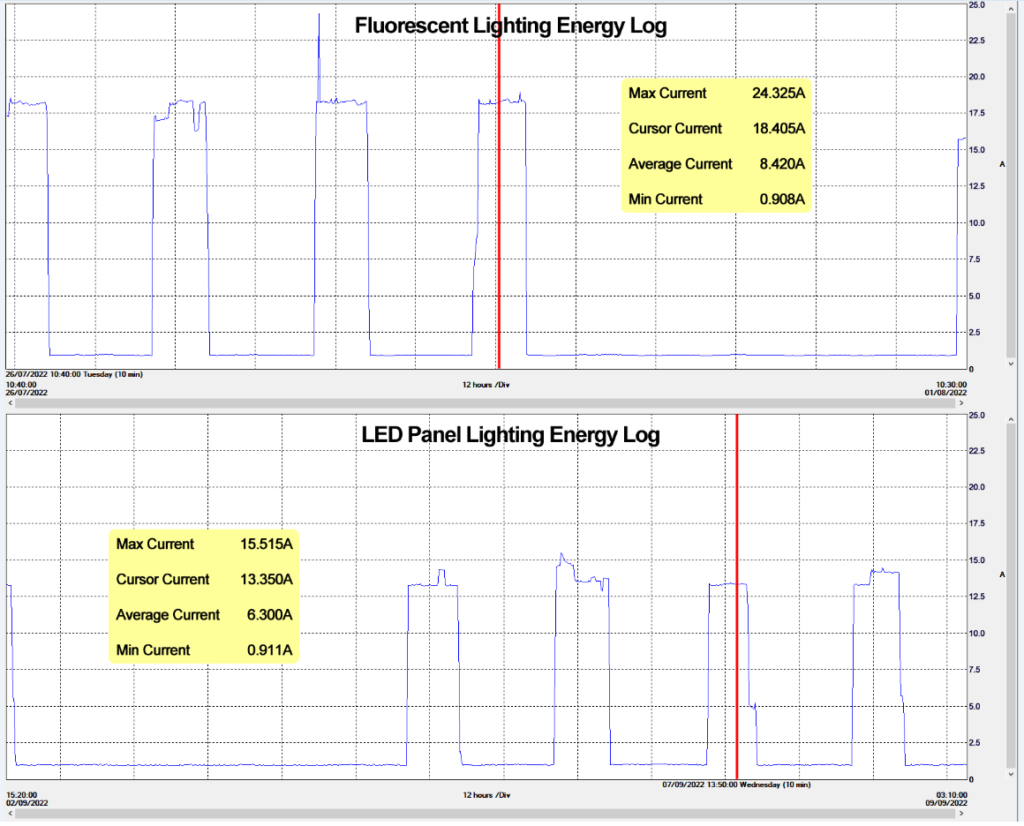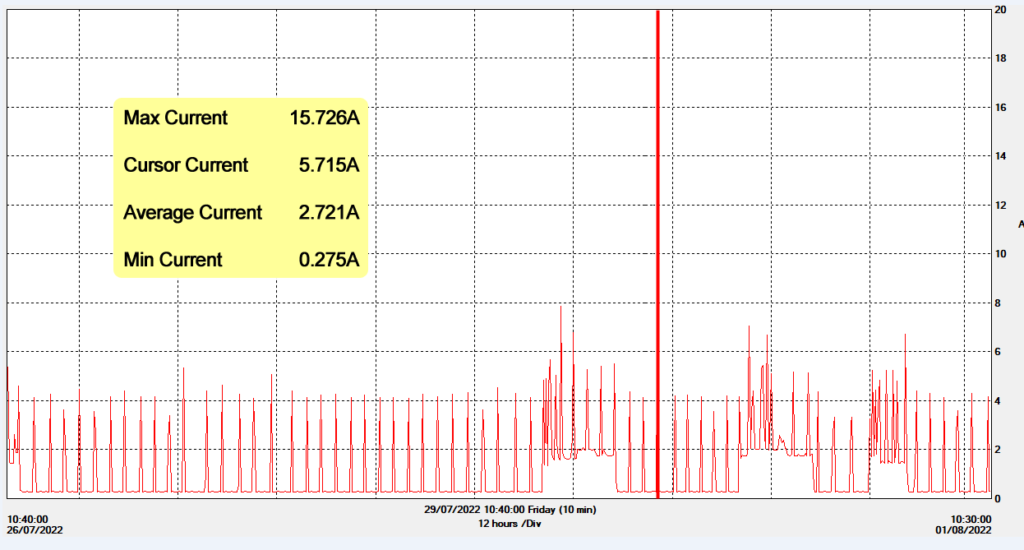What will probably turn out to be the biggest consumers of electrical energy in our facility, although they are currently switched off due to the heatwave we are experiencing, are a selection of wall mounted panel heaters located throughout the building. 9 rated at 3KW, 6 at 2KW and another 6 rated at 750W.
The suspended ceilings in the ground floor rooms were fitted with a total of 48 units, each containing 4 x 1200mm 36-Watt florescent tubes, and the warehouse and entire upstairs floor lit by 72 standard 2387mm 100-Watt tubes. Specifically, there were 15 in the warehouse and 57 upstairs.
Simply calculated, the 48 fittings totalling 6,912W, and 15 x 100W tubes in the warehouse, should give us a power consumption of 8412W downstairs, with another 5700W upstairs. Thus, with all the lights switched on, our theoretical total lighting power consumption would be 14,112W or 14.1KW.




